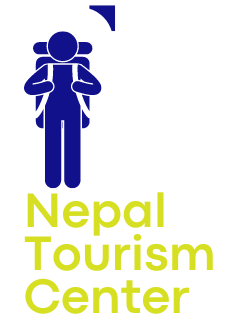The Everest Base Camp Trek (EBC) is one of the most famous and sought-after trekking experiences in the world. Whether you’re a seasoned adventurer or a beginner to high-altitude trekking, this journey offers unparalleled views of Mount Everest and the surrounding Himalayan peaks, along with a chance to immerse yourself in the unique culture and lifestyle of the Sherpa people.
But trekking to Everest Base Camp isn’t a walk in the park. With its high altitudes, changing weather conditions, and challenging terrain, the EBC trek is demanding both physically and mentally. In this article, we’ll explore everything you can expect during your trek—from the physical challenges to the breathtaking scenery, and the cultural encounters along the way.
1. The Terrain and Route
The trek to Everest Base Camp spans around 130 kilometers (81 miles) and typically takes 12-14 days, including rest and acclimatization days. The trail winds through beautiful valleys, dense forests, and ancient Sherpa villages, offering a diverse range of landscapes. The terrain will vary, and you’ll face several steep ascents, descents, and rocky paths. Here’s what you can expect on the route:
The First Few Days
- Lukla to Phakding (2,610 meters / 8,563 feet): Your journey begins with a flight from Kathmandu to Lukla, a small town perched in the mountains. The Lukla airport is famous for being one of the most dangerous in the world, but the excitement of the flight offers spectacular views of the Himalayas. From Lukla, the trail descends slightly and follows the Dudh Koshi River before arriving at Phakding.
- Phakding to Namche Bazaar (3,440 meters / 11,286 feet): After Phakding, you’ll begin a steady climb towards Namche Bazaar, a bustling town that serves as the gateway to the Everest region. Expect a long day of trekking, including steep sections, crossing suspension bridges, and entering the Sagarmatha National Park. The views of the Thamserku and Kantega mountains will leave you in awe.
Mid-Trek
- Namche Bazaar to Tengboche (3,867 meters / 12,684 feet): After a rest day in Namche Bazaar, you’ll continue on the trail towards Tengboche, home to the famous Tengboche Monastery. The trek will take you through forests of pine, rhododendron, and fir, with stunning views of Mount Everest, Ama Dablam, and Lhotse along the way. The monastery is an important spiritual site for Sherpas, and you can observe monks performing rituals.
- Tengboche to Dingboche (4,410 meters / 14,469 feet): From Tengboche, the trail ascends gradually to Dingboche, a peaceful village with stunning views of Cholatse and Ama Dablam. The terrain will begin to get more rugged, and you’ll start to feel the effects of the increasing altitude.
The Final Stretch
- Dingboche to Lobuche (4,910 meters / 16,109 feet): As you continue your ascent, you’ll pass Pheriche and reach Lobuche, where the air will become noticeably thinner. From here, you’ll be able to catch your first glimpse of Everest in the distance, giving you a surge of excitement for the final push.
- Lobuche to Everest Base Camp (5,364 meters / 17,598 feet): The final stretch to Everest Base Camp takes you through rough, rocky terrain. As you approach the base camp, the trail becomes more rugged, and the air is thinner. Reaching the base camp itself is a triumphant moment, with stunning views of Everest, Khumbutse, and Nuptse in the background. You’ll also see the famous Khumbu Icefall from the base camp, one of the most dangerous parts of the ascent for mountaineers.
2. The Altitude and Acclimatization
One of the most important aspects of the Everest Base Camp trek is understanding the effects of altitude. While Everest Base Camp itself is at an altitude of 5,364 meters (17,598 feet), you will be trekking through altitudes of 3,000 meters (9,843 feet) or higher for most of the trek.
Acclimatization
The key to enjoying the trek and avoiding altitude sickness is acclimatization. As you ascend, you will spend rest days in places like Namche Bazaar and Dingboche, allowing your body time to adjust to the thinner air. These rest days are essential for avoiding symptoms like dizziness, nausea, headaches, and fatigue.
Altitude Sickness
Even with proper acclimatization, altitude sickness can still occur, especially at altitudes above 4,000 meters (13,123 feet). Symptoms of AMS (Acute Mountain Sickness) include headaches, nausea, shortness of breath, and fatigue. If symptoms persist or worsen, descending to a lower altitude is essential. It’s important to stay hydrated, take it slow, and listen to your body.
3. Physical Demands and Fitness
The Everest Base Camp trek is physically demanding, so it’s important to be in good physical condition before you embark. While the trek does not require technical mountaineering skills, you will need stamina, endurance, and the ability to walk for hours on uneven, often steep terrain.
- Fitness Level: A good fitness routine should include cardiovascular training (like hiking, running, or cycling), strength training (especially for the legs and core), and flexibility exercises. If you’re new to hiking, it’s a good idea to build up your endurance by taking regular hikes on varied terrain.
- Pacing Yourself: It’s essential to pace yourself throughout the trek. Don’t rush; the higher you go, the slower you need to go. Trekking too fast can increase your risk of altitude sickness. Rest often, drink plenty of water, and take in the stunning scenery.
4. Cultural Encounters
The Everest Base Camp trek isn’t just about the physical challenge; it’s also an opportunity to immerse yourself in the Sherpa culture. Along the way, you’ll pass through numerous Sherpa villages, where you’ll have the chance to learn about their customs, traditions, and way of life.
- Sherpa People: The Sherpas are the indigenous people of the Everest region and have lived in the mountains for centuries. They are known for their mountaineering skills and have helped many expeditions to the summit of Mount Everest.
- Monasteries and Temples: You’ll visit Buddhist monasteries, such as the Tengboche Monastery, where you can observe Buddhist ceremonies and interact with the monks. The Sherpas’ devotion to Buddhism is an integral part of their culture, and you’ll see prayer flags, stupas, and Mani stones (inscribed stones) along the route.
- Hospitality: The Sherpa people are renowned for their hospitality. Along the way, you’ll stop at teahouses where you can rest, enjoy a hot meal, and interact with local trekkers and guides. Sherpas are incredibly supportive and often share stories of their own experiences in the mountains.
5. The Weather and What to Pack
The weather on the Everest Base Camp trek can be unpredictable, with temperatures ranging from warm days in the lower altitudes to freezing nights at higher elevations. In the warmer months (March-May and September-November), the weather is generally clear and conducive to trekking.
Packing Essentials
- Clothing: Layering is key. You’ll need lightweight, moisture-wicking clothing for warmer days, along with warm clothing (including a down jacket) for cold nights at higher altitudes.
- Footwear: Sturdy trekking boots are essential for long days of walking on rocky and uneven paths.
- Trekking Poles: Helpful for balance and reducing the strain on your knees, especially on steep descents.
- Water and Snacks: Staying hydrated is crucial, and you should bring water bottles or a water purification system. Energy snacks like nuts, energy bars, and dried fruits will help keep you fueled during the trek.
6. The Rewards of the Trek
The Everest Base Camp trek is one of the most fulfilling trekking experiences in the world, and while it is physically demanding, it offers unparalleled rewards:
- Breathtaking Views: The scenery along the trek is nothing short of spectacular, from the lush forests and rivers to the snow-capped peaks of Everest, Lhotse, Makalu, and Cho Oyu. The grandeur of the Khumbu Icefall and the view from Everest Base Camp itself will make every step worth it.
- A Sense of Accomplishment: Reaching Everest Base Camp is a monumental achievement. You’ll feel an incredible sense of pride when you stand at the foot of Mount Everest, knowing that you’ve successfully completed one of the world’s most famous treks.
- Cultural Experience: Engaging with the Sherpa community and learning about their way of life, beliefs, and traditions adds a rich cultural layer to the journey.
Conclusion
Trekking to Everest Base Camp is an adventure of a lifetime—one that challenges both your body and mind, but rewards you with breathtaking views, unforgettable experiences, and a sense of achievement. The trek will push you to your limits, but the memories, the stunning landscapes, and the cultural insights you gain will stay with you forever.
With the right preparation, mindset, and respect for the mountain and its people, the Everest Base Camp trek is an unforgettable journey to the roof of the world.


Leave a Reply